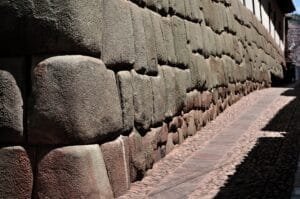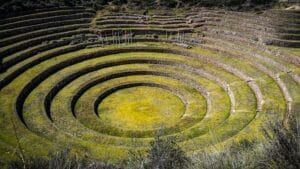The Inca Empire, which flourished in the Andean region of South America before the Spanish conquest, left behind a remarkable legacy of architectural achievements. Known for their sophisticated engineering and construction techniques, the Incas built cities, temples, and infrastructure that continue to awe and inspire. In this post, we explore the mysteries and marvels of Inca architecture, delving into the ingenuity and craftsmanship that defined one of history’s most advanced civilizations.
Precision Stonework: The Art of Ashlar Masonry

One of the most striking features of Inca architecture is the precision stonework known as ashlar masonry. The Incas crafted walls from finely cut stones that fit together so perfectly that they required no mortar. This technique not only demonstrated exceptional skill but also contributed to the structures’ durability, allowing them to withstand earthquakes and the test of time. Famous examples include the walls of Sacsayhuamán and the city of Cusco, where stones of various sizes and shapes are seamlessly joined.
The Mystery of Machu Picchu

Machu Picchu, the iconic Inca citadel perched high in the Andes, is a masterpiece of engineering and architectural design. Built in the 15th century, this site is renowned for its terraces, which prevented erosion and created arable land, as well as its sophisticated drainage system. The exact purpose of Machu Picchu remains a mystery, with theories ranging from a royal estate to a religious sanctuary. Its remote location and the precision of its construction have fueled numerous speculations about the Incas’ astronomical knowledge and spiritual practices.
Terracing and Agriculture: Maximizing the Land

The Incas were adept at modifying their environment to suit their agricultural needs. They built extensive terracing systems on the steep mountainsides, which helped prevent soil erosion and managed water distribution. These terraces allowed for efficient use of space and created microclimates for growing a variety of crops, such as potatoes, maize, and quinoa. The agricultural terraces of Moray, with their concentric circular design, are a notable example, believed to have been an experimental agricultural site.
The Qhapaq Ñan: The Inca Road Network

The Qhapaq Ñan, or Great Inca Road, was an extensive network of pathways that connected the vast Inca Empire, spanning from Colombia to Chile. This road system facilitated communication, transportation, and trade across diverse terrains, including deserts, mountains, and forests. The construction of these roads involved advanced engineering techniques, including the use of suspension bridges and retaining walls. The Qhapaq Ñan was not only a practical infrastructure but also a symbol of the unity and reach of the Inca civilization.
Religious and Astronomical Structures

Inca architecture often incorporated elements that reflected their religious beliefs and astronomical knowledge. Many Inca sites, such as the Temple of the Sun in Cusco, feature structures aligned with celestial events like the solstices and equinoxes. The Intihuatana stone at Machu Picchu is believed to have served as an astronomical clock or calendar, used to mark important dates and rituals. These architectural features underscore the deep connection between Inca society and the natural world.
Legacy of Inca Architecture
Inca architecture represents a pinnacle of ancient engineering and artistic expression, characterized by its integration with the natural landscape and its functional beauty. The Incas’ ability to build lasting structures with limited tools and resources is a testament to their ingenuity and resilience. Today, the remnants of Inca architecture continue to draw researchers and tourists alike, fascinated by the enduring mysteries and marvels of this ancient civilization. Whether exploring the ruins of Machu Picchu or the streets of Cusco, one can witness the enduring legacy of the Inca’s architectural genius.

